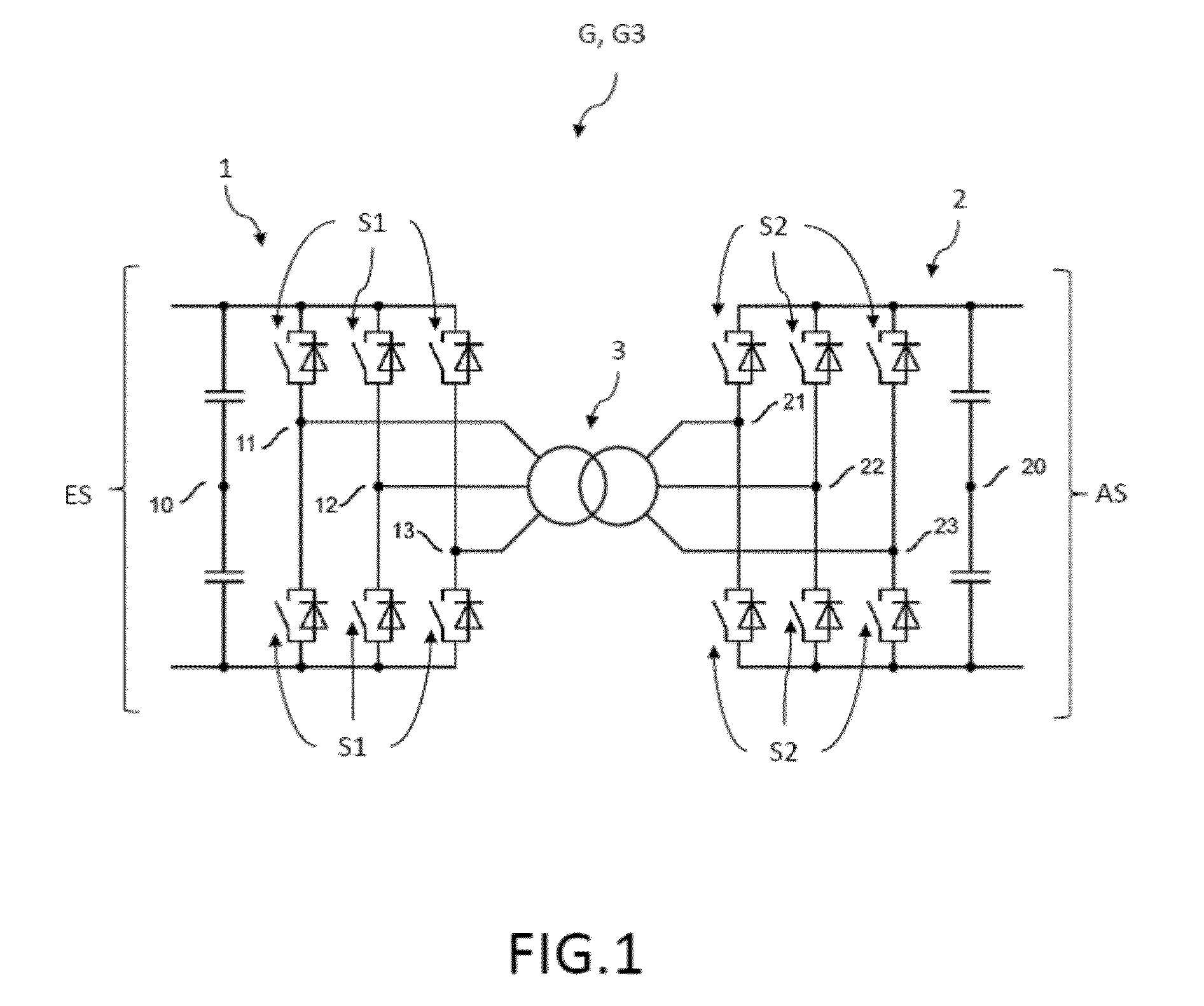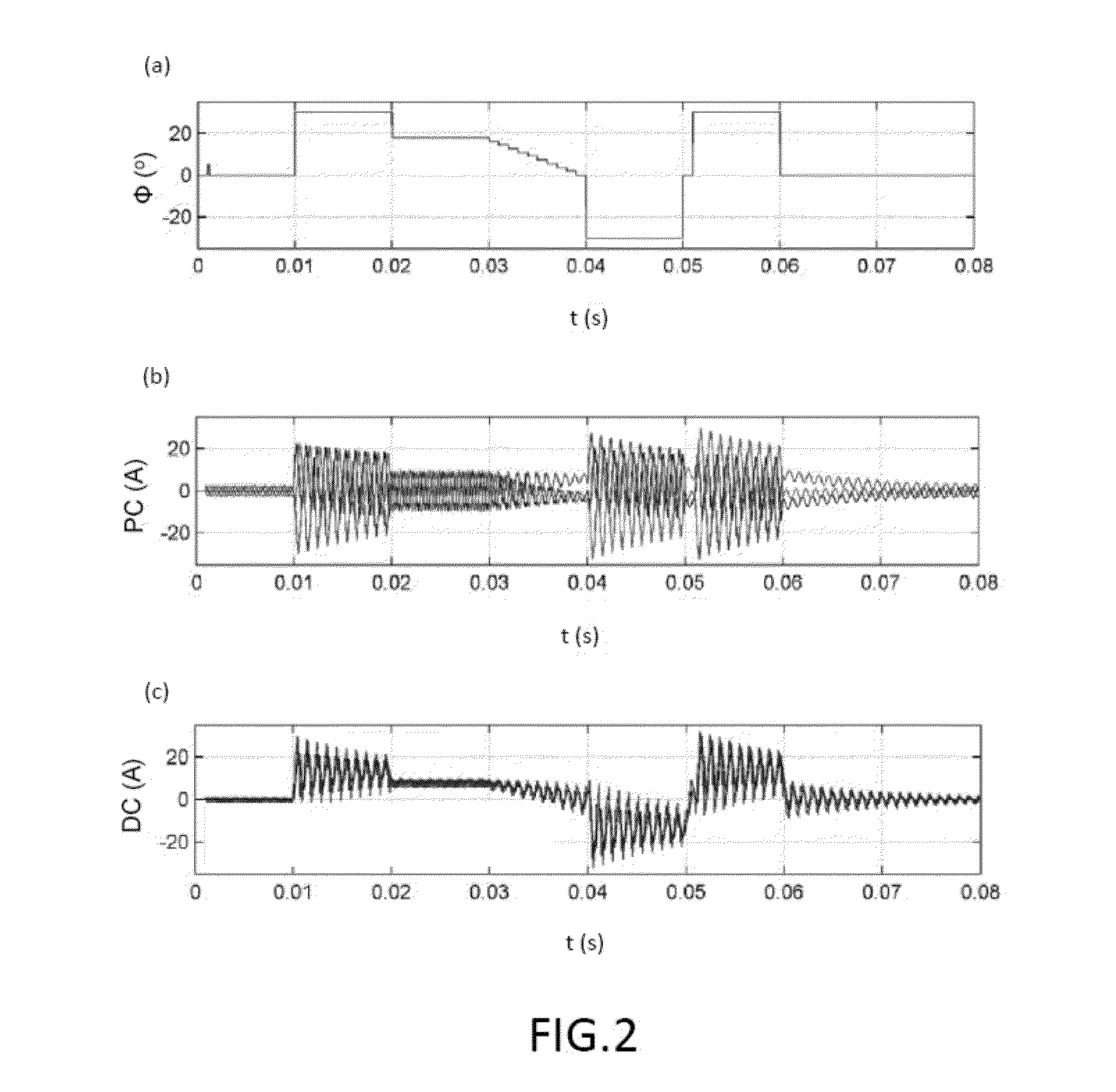Current control for dc-dc converters
a current control and converter technology, applied in the direction of electric variable regulation, power conversion system, instruments, etc., can solve the problems of unbalanced current distribution in phases, unsatisfactory oscillation, and reduced current regulation dynamics, so as to reduce the oscillation of direct current and fast current regulation
- Summary
- Abstract
- Description
- Claims
- Application Information
AI Technical Summary
Benefits of technology
Problems solved by technology
Method used
Image
Examples
Embodiment Construction
[0043]As an embodiment of the DC-DC converter, FIG. 1 shows a three-phase DC-DC converter G3 with a primary side 1 comprising three actively switched primary voltage bridges 11, 12, 13, each having two active switches Si for converting a DC input voltage ES into primary alternating voltages 111, 112, 113 for each of the primary voltage bridges 11, 12, 13, and with a secondary side 2 comprising three actively switched secondary voltage bridges 21, 22, 23, each having two active switches S2 for converting the secondary alternating voltages 211, 212, 213 into a shared DC output voltage AS for each of the secondary voltage bridges 21, 22, 23. Examples of suitable switches S1, S2 for the voltage bridges are active semiconductor switches (power semiconductors) such, for instance, gate turn-off thyristors, transistors, MOSFETs, IGBTs (insulated gate bipolar transistors) or ICGTs (integrated gate-commuted thyristor) with intelligent gate drivers. In other embodiments, the number of voltage ...
PUM
 Login to View More
Login to View More Abstract
Description
Claims
Application Information
 Login to View More
Login to View More - R&D
- Intellectual Property
- Life Sciences
- Materials
- Tech Scout
- Unparalleled Data Quality
- Higher Quality Content
- 60% Fewer Hallucinations
Browse by: Latest US Patents, China's latest patents, Technical Efficacy Thesaurus, Application Domain, Technology Topic, Popular Technical Reports.
© 2025 PatSnap. All rights reserved.Legal|Privacy policy|Modern Slavery Act Transparency Statement|Sitemap|About US| Contact US: help@patsnap.com



